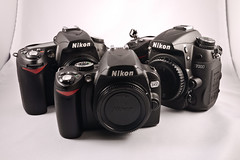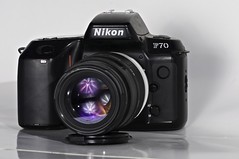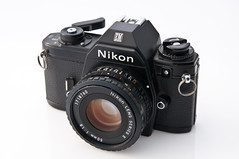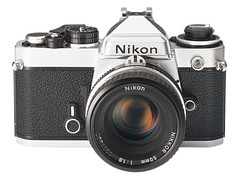Difference between revisions of "Nikon"
m (→Auto focus SLR: link to f/n90) |
(→Digital: +D4S, D3300) |
||
| Line 75: | Line 75: | ||
* [[Nikon D3x]] - 2008 | * [[Nikon D3x]] - 2008 | ||
* Nikon D4 - 2012 | * Nikon D4 - 2012 | ||
| + | * Nikon D4S - 2014 | ||
* [[Nikon D40]] - 2006 | * [[Nikon D40]] - 2006 | ||
* [[Nikon D40x]] - 2007 | * [[Nikon D40x]] - 2007 | ||
| Line 95: | Line 96: | ||
* [[Nikon D3100]] - 2010 | * [[Nikon D3100]] - 2010 | ||
* Nikon D3200 - 2012 | * Nikon D3200 - 2012 | ||
| + | * Nikon D3300 - 2014 | ||
* [[Nikon D5000]] - 2009 | * [[Nikon D5000]] - 2009 | ||
* [[Nikon D5100]] - 2011 | * [[Nikon D5100]] - 2011 | ||
| Line 101: | Line 103: | ||
* [[Nikon D7000]] - 2010 | * [[Nikon D7000]] - 2010 | ||
* [[Nikon D7100]] - 2013 | * [[Nikon D7100]] - 2013 | ||
| − | * Nikon Df | + | * Nikon Df - 2013 |
* [[Nikon E2/E3|Nikon E2]] - 1994 | * [[Nikon E2/E3|Nikon E2]] - 1994 | ||
* [[Nikon E2/E3|Nikon E2s]] - 1994 | * [[Nikon E2/E3|Nikon E2s]] - 1994 | ||
Revision as of 05:52, 11 January 2014

|
| Registration of Nikon, Nikoflex and other trademarks. Downloaded from the IPDL, in accordance to the IPDL policies. |
Nikon is a Japanese company specializing in optics and imaging. Its full name is Nikon Corporation (㈱ニコン, Kabushiki Kaisha Nikon) since 1988.
Contents
History
The company was founded in 1917 as Nippon Kōgaku Kōgyō K.K. (日本光学工業㈱, often rendered in English as Nippon Kogaku) with the merger of two Japanese optical firms with military connections. The company's first camera lenses were designed in the 1920s by Heinrich Acht, who was invited with a team of German engineers (see Nippon Kōgaku lenses before 1945). After the departure of Acht, the lens design department was taken over by Sunayama Kakuya (砂山角野). The first lens mounted on a camera for civil use was the Anytar 12cm f/4.5 made in the early 1930s, renamed Nikkor in 1932. From 1934, the company supplied lenses to Seiki Kōgaku for the early Canon cameras.
During World War II the company expanded significantly, supplying optical equipment to the Japanese military, including various aerial cameras.[1]
After the war, Nippon Kōgaku decided to produce cameras for civil use, and two projects were started: a 6×6cm TLR and a 35mm rangefinder camera. The TLR, called Nikoflex, was shelved because of problems to find an adequate leaf shutter. The rangefinder camera was inspired by the German Contax and Leica. It is said that various names were considered, including Pentax, Nicca or Nikorette.[2] It was finally released as the Nikon in 1948.

|
| DSLR bodies, D-series image by Ed Kwon (Image rights) |
The Nikon I proved very successful, and was followed by a long line of rangefinder cameras. In parallel, the company produced a range of Nikkor lenses both in Leica mount and for its own rangefinder cameras. The quality of these lenses attracted the attention of many professional photographers and photojournalists desiring better results from the small 35mm format.
In 1959, Nippon Kōgaku introduced the Nikon F, an advanced mechanical single lens reflex (SLR) camera that proved to be extraordinarily durable and reliable. With the F, Nikon introduced its philosophy of high-quality, low-friction, close-tolerance mechanisms requiring less lubricant than other cameras.source needed This workmanship had a practical side, as Nikons have accompanied more photographers to extreme environments — from the summit of Mount Everest to the depths of the Saharan Desert — than any other SLR camera. The F became an overnight success with many professional and serious amateur photographers, and spawned a succession of popular Nikon 35mm film cameras, culminating with the Nikon F6.
In 1983 Nikon launched the Nikon F3AF, a professional SLR with autofocus together with the autofocus lenses AF 80mm f2.8 and AF 200mm f3.5 ED-IF, a fast portrait lens and a fast tele lens since the camera was designed as kind of press camera. Both lenses had internal AF motors and worked on a slightly modified F-lenses bayonet, thus enabling the usage of manual focusing lenses on the autofocus camera body.
In the mid 1990s Nikon made its first DSLRs, the E-series, expensive cameras producing low image resolution. In the late 1990s, Nikon introduced its consumer line digital photography products with both the Coolpix line of consumer and "prosumer" cameras as well as the Nikon D-series (DSLRs).
In 2003 the company owned Photonics Technology Group which developed an own kind of image sensors (LBCAST-technology instead of common CCD or CMOS chip-architecture). In 2008 Nikon returned to conventional sensortypes with its FX-format CMOS sensor (FX-Format=35mm film frame-format) which it applied in its Nikon D3 DSLR. In autumn 2011 Nikon introduced its mirrorless digital camera system after concurrents Panasonic, Olympus, Sony and Samsung had won big market shares with help of the first and second generation of their mirrorless system cameras, and Panasonic and Olympus even had launched the 3rd generation. The Nikon 1 system uses an own sensor format and special 1 Nikkor AF lenses.
Digital
SLR
| ||
| ||
|
- Nikon D1 - 1999
- Nikon D1H - 2001
- Nikon D1X - 2001
- Nikon D2H - 2003
- Nikon D2Hs - 2005
- Nikon D2X - 2004
- Nikon D2Xs - 2006
- Nikon D3 - 2007
- Nikon D3s - 2009
- Nikon D3x - 2008
- Nikon D4 - 2012
- Nikon D4S - 2014
- Nikon D40 - 2006
- Nikon D40x - 2007
- Nikon D50 - 2005
- Nikon D60 - 2008
- Nikon D70 - 2004
- Nikon D70s - 2005
- Nikon D80 - 2006
- Nikon D90 - 2008
- Nikon D100 - 2002
- Nikon D200 - 2005
- Nikon D300 - 2007
- Nikon D300s - 2009
- Nikon D600 - 2012
- Nikon D610 - 2013
- Nikon D700 - 2008
- Nikon D800(E) - 2012
- Nikon D3000 - 2009
- Nikon D3100 - 2010
- Nikon D3200 - 2012
- Nikon D3300 - 2014
- Nikon D5000 - 2009
- Nikon D5100 - 2011
- Nikon D5200 - 2012
- Nikon D5300 - 2013
- Nikon D7000 - 2010
- Nikon D7100 - 2013
- Nikon Df - 2013
- Nikon E2 - 1994
- Nikon E2s - 1994
- Nikon E2N - 1996
- Nikon E2Ns - 1996
- Nikon E3 - 1999
- Nikon E3S - 1999
See also Kodak for the various DCS models based on Nikon bodies.
See also Fujifilm for DCS models with Nikon lens compatibility and cameras based on Nikon DSLR bodies (S2 Pro and S3 Pro)
Interchangeable-lens compact
- Nikon 1 J1 (2011)
- Nikon 1 J2 (2012)
- Nikon 1 J3 (2013)
- Nikon 1 S1 (2013)
- Nikon 1 V1 (2011)
- Nikon 1 V2 (2012)
Fixed Lens

|
| Nikon CoolPix 5200 image by clicks_1000 (Image rights) |
All Nikon's compact digital cameras with fixed lenses are branded with the Coolpix trademark and are listed together.
Still Video Cameras
- Nikon QV prototype (modified F-801)
- Nikon QV-1000C
35mm film
Auto focus SLR
- Nikon F3AF - 1983
- Nikon F4 - 1988
- Nikon F4e - 1991
- Nikon F4P
- Nikon F4s - 1988
- Nikon F5 - 1996
- Nikon F6 - 2004

|
| F70 image by Titin Soriano (Image rights) |
- Nikon F50 (N50) - 1994
- Nikon F55 (N55) - 2002
- Nikon F60 (N60) - 1999
- Nikon F65 (N65) - 2000
- Nikon F70 (N70) - 1994
- Nikon F75 (N75) - 2003
- Nikon F80 (N80) - 2000
- Nikon F90 (N90) - 1990
- Nikon F90X (N90S) - 1992
- Nikon F100 - 1999
- Nikon F-401 (N4004) - 1987
- Nikon F-401S (N4004S) - 1989
- Nikon F-401X (N5005) - 1991
- Nikon F-501 (N2020) - 1986
- Nikon F-601 (N6006) - 1990
- Nikon F-801 (N8008) - 1988
- Nikon F-801S (N8008S) - 1991
Manual focus SLR

|
| Nikon EM image by Hans Jan Dürr (Image rights) |
- Nikkorex F / Nikkor J - 1962
- Nikomat/Nikkormat
- Nikomat/Nikkormat EL - 1972
- Nikomat/Nikkormat ELW - 1976
- Nikomat/Nikkormat FS - 1965
- Nikomat/Nikkormat FT - 1965
- Nikomat/Nikkormat FTN - 1967
- Nikomat/Nikkormat FT2 - 1975
- Nikomat/Nikkormat FT3 - 1977
- Nikon EL2 - 1977
- Nikon EM - 1979
- Nikon F - 1959
- Nikon F Photomic - 1962
- Nikon F Photomic FTn - 1968
- Nikon F Photomic T - 1965
- Nikon F Photomic Tn - 1967
- Nikon F2 - 1971
- Nikon F2 Photomic - 1971
- Nikon F2 Photomic A - 1977
- Nikon F2 Photomic AS - 1977
- Nikon F2 Photomic S - 1973
- Nikon F2 Photomic SB - 1976
- Nikon F3 - 1980
- Nikon F3HP - 1982
- Nikon F3P
- Nikon F3/T - 1982
- Nikon FA - 1983

|
| Nikon FE image by polbar (Image rights) |
- Nikon FE - 1978
- Nikon FE10 - 1996
- Nikon FE2 - 1983
- Nikon FG - 1982
- Nikon FG20 - 1984
- Nikon FM - 1977
- Nikon FM10 - 1995
- Nikon FM2 - 1982
- Nikon FM2n - 1983
- Nikon FM2/T - 1994
- Nikon FM3A - 2001
- Nikon F-301 (N2000) - 1985
- Nikon F-601M (N6000) - 1990
Leaf shutter SLR
- Nikkorex 35 ( 1960-1962)
- Nikkorex 35|2 (1962-)
- Nikkorex Zoom 35 (1963-)
- Nikkorex Auto 35 / Nikon Auto 35 (1964-)
Rangefinder
- Nikon I (1948)
- Nikon M (1949)
- Nikon S (1951)
- Nikon S2 (1954)
- Nikon SP (1957)
- Nikon S3 (1958)
- Nikon S4 (1959)
- Nikon S3M (1960)
- Nikon S3 2000 (2000)
- Nikon SP 2005 (2005)
Fixed lens / Compact

|
| 28Ti image by Dries van den Elzen (Image rights) |
As with other Japanese manufacturers, Nikon's models were given different names in different territories and formed a confusing array of series, some of which lasted several years and crossed over with others. Below is a list of all the ranges along with some models that defy categorization.
- Nikon 28Ti (Quartz Date, silver titanium body, 28mm/2.8 Nikkor lens, 1994)
- Nikon 35Ti (Quartz Date, black titanium body, 35mm/2.8 Nikkor lens, 1993)
- Nikon AF/Fun•Touch series (Wide angle autofocus lenses, from RF of 1987 to AF250SV of 2002)
- Nikon AW35/Sport•Touch (QD) (Splash-proof, 35mm/3.5, 1992)
- Nikon BF100 (QD) (Fixed focus, big finder, 34mm/4.5, 1997)
- Nikon EF/Nice•Touch series (fixed focus wide angles, from EF100 in 1993 to EF500SV in 2002)
- Nikon L series (from Nikon's first compact autofocus camera the L35AF in 1983 to the L35TWAF of 1986)
- Nikon One•Touch series (Very compact autofocus, from the L35AF2 in 1985 to W35 in 1991)
- Nikon RF10/Smiletaker (34mm/4.5, 1992)
- Nikon TW/Tele•Touch/Zoom•Touch series (Dual lenses and zooms from the TW2 in 1987 to the TW Zoom 105 WORLDTIME of 1992)
- Nikon Zoom/Lite•Touch Zoom/One•Touch Zoom series (All with autofocus, from Zoom 100 of 1993 to the Lite•Touch Zoom 100W of 2003, Nikon's final compact 35mm film camera.)
Underwater
- Nikonos (Calypso/Nikkor)
- Nikonos II (Calypso / Nikkor II)
- Nikonos III
- Nikonos IV-A
- Nikonos V
- Nikonos RS
APS film
SLR
- Nikon Pronea-S - 1999
- Nikon Pronea 600i / Pronea 6i - 1996
Compact
- Nuvis A20
- Nuvis E10
- Nuvis mini

|
| Nuvis S image by AWCam (Image rights) |
- Nuvis S
- Nuvis S 2000
- Nuvis V
- Nuvis 60
- Nuvis 75
- Nuvis 200
- Nuvis 300
Other cameras
Lenses
see Nippon Kōgaku lenses before 1945, Nikkor and Nikon F lenses.
Flash
|
|
Bellows
See Nikon Bellows.
Notes
- ↑ Its address in 1943 was Tōkyō-to Ōmori-ku Iriarai-chō 5–345 (東京都大森区入新井町5–345). Source: "Kokusan shashinki no genjōchōsa" ("Inquiry into Japanese cameras"). (The source erroneously says 八新井町 for 入新井町.)
- ↑ Rotoloni, Nikon Rangefinder Camera, p.7; "Nikon Rangefinder Cameras" in the Nikon official website.
Bibliography
- "Kokusan shashinki no genjōchōsa" (国産写真機ノ現状調査, Inquiry into Japanese cameras), listing Japanese camera production as of April 1943. Reproduced in Supuringu kamera de ikou: Zen 69 kishu no shōkai to tsukaikata (スプリングカメラでいこう: 全69機種の紹介と使い方, Let's try spring cameras: Presentation and use of 69 machines). Tokyo: Shashinkogyo Syuppan-sha, 2004. ISBN 4-87956-072-3. Pp.180–7.
- Rotoloni, Robert. Nikon Rangefinder Camera. Hove, East Sussex: Hove Foto Books, 1983 (second edition). ISBN 1-874707-07-3.
- Hillebrand, Rudolf and Hauschild, Hans-Joachim. Nikon Compendium. Handbook of the Nikon System. Hove (UK): Hove Books, 1993. 198 pages. ISBN 1897802021.
- Stafford, Simon, Hillebrand, Rudolf and Hauschild, Hans-Joachim. Nikon Compendium: Nikon Systems from 1917. Hove (UK): Hove Books, 2004. 388 pages. ISBN 1897802161.
- Stafford, Simon, Hillebrand, Rudolf and Hauschild, Hans-Joachim. The New Nikon Compendium: Cameras, Lenses & Accessories since 1917. Lark Books, 2004. 416 pages. ISBN 1579905927.
- Comon, Paul and Evans, Art. Nikon Data. 500 + cameras, lenses, and accesories. A detailed buying manual a complete pricing guide. Photo Data Research, 1990. 150 pages. ISBN 0962650803.
- Trademark publication for the names "Nikon", "Nikoflex", "Sphex" and "Parax". The trademarks were applied for (出現) on 5 August 1946 and granted (公告) on 24 February 1947 (no.S22-153 to S22-156). Available in the IPDL trademark database.
Links
In English:
- Official Nikon Site
- Official Nikon's History and Technology pages:
- Legendary Nikons (articles by Yokoyuki Tateno)
- Camera chronicle
- Nikkor - The thousand and one nights
- Best of the rest (articles by Kenji Toyoda)
- History of Nikon Cameras
- Nikon Rangefinder Lens Price & Information Guide
- Nikon at Wikipedia, a comprehensive overview of company, history and products.
- Nikonians, a large Nikon fan site.
- Nikon Camera Blog, a Nikon Camera and Lens Blog
- Pictorial History of Nikon cameras at Photography in Malaysia, including the compacts, the rangefinders, the Nikonos, the 35mm SLRs and the digital SLRs
- Pictures of Nikon prototypes at Hans Braakhuis' Flickr stream
- Nikon Historical Society website "Nikon Journal"
- Article titled "Nikon and the sponsorship of Japan's optical industry by the Imperial Japanese Navy, 1917-1945", by Jeff Alexander, published in Gateway
- Nikon instruction manuals - English on Mike Butkus' www.orphancameras.com site
- Nikon history on NipponKogakuKlub [1]
In French:
In Spanish:
- Manual Camera Utilizando las Nikon de enfoque manual y otras cámaras clásicas
In Images:


